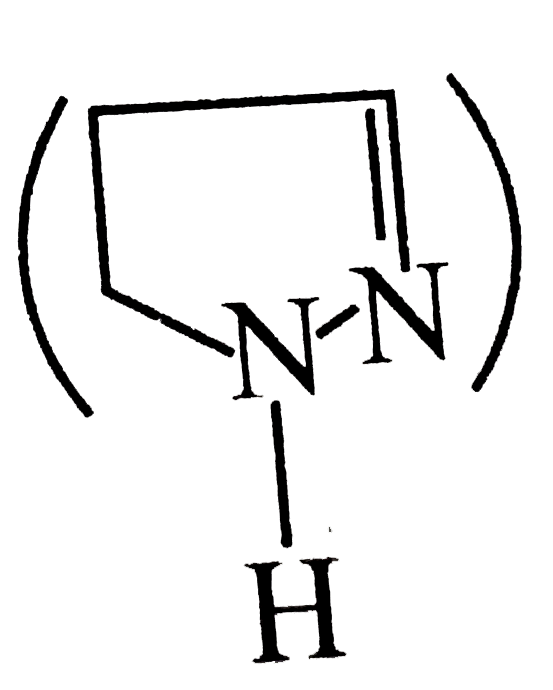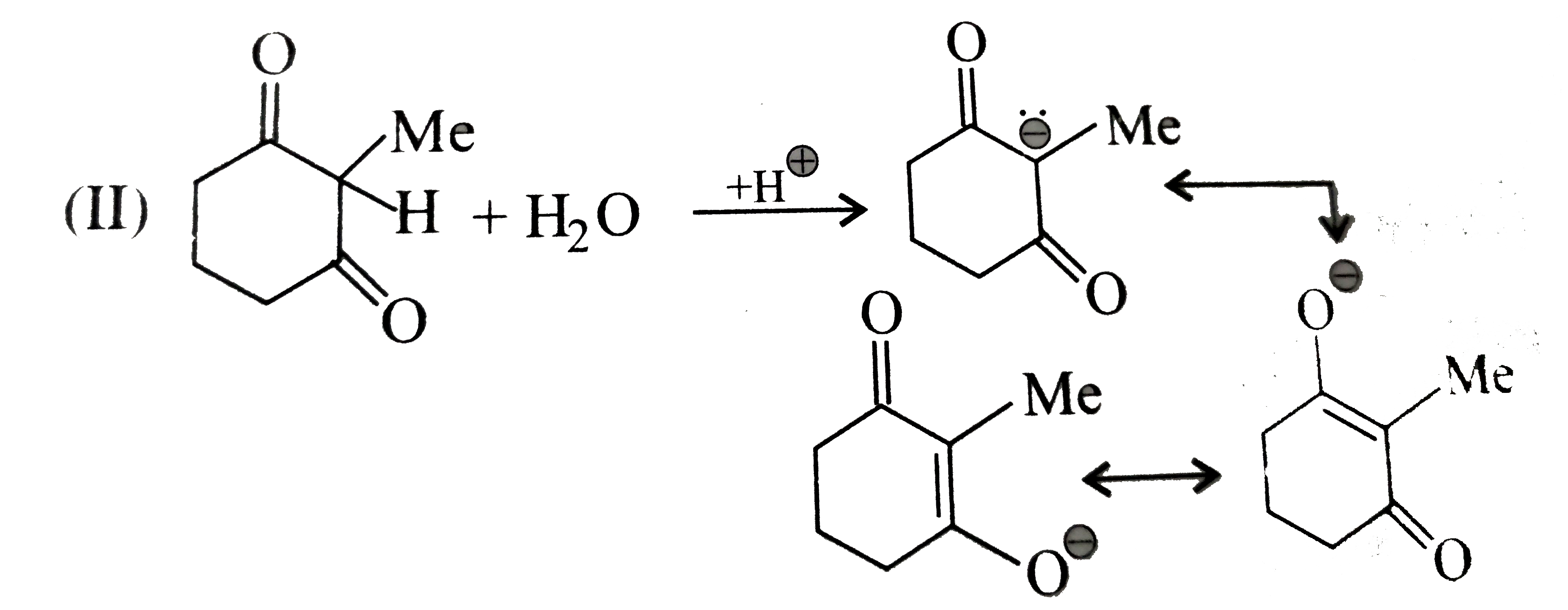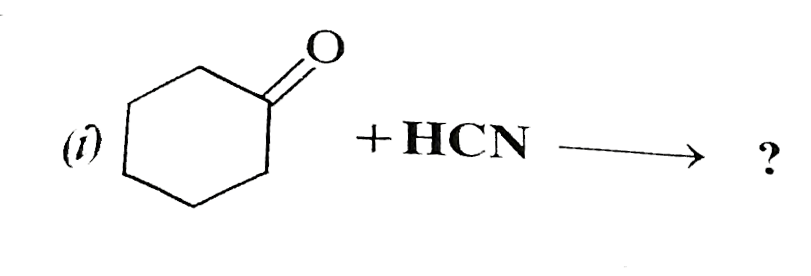Explain:
a. P-Aminobenzaldehyde (I) does not show nucleophilic addition reaction.
b. Which is more acidic and why: (I) cyclohexanone or (II) 2-methyl cyclohexan-1,3-dione ?
c. When acrolein (CH2=CH−CHO) reacts with hydrazine (..NH2..NH2), dihydropyrazole  is formed. Give the mechanism of the reaction.
is formed. Give the mechanism of the reaction.
Video Solution
Text Solution
a. Due to resonance stabilisation, there is no true (C=O) bond present in (I) and it behaves as an amide.

b. Here, (II) is more acidic because its anolate ion is stabilised by an additional resonance structure.

c. 

|
Topper's Solved these Questions
- ALIPHATIC AND AROMATIC ALDEHYDES AND KETONESBOOK - CENGAGE CHEMISTRYCHAPTER - ALIPHATIC AND AROMATIC ALDEHYDES AND KETONESEXERCISE - Solved Examples
13 Videos
- ALIPHATIC AND AROMATIC ALDEHYDES AND KETONESBOOK - CENGAGE CHEMISTRYCHAPTER - ALIPHATIC AND AROMATIC ALDEHYDES AND KETONESEXERCISE - Exercises Subjective
52 Videos
- ALCOHOL,PHENOL AND ETHERSBOOK - CENGAGE CHEMISTRYCHAPTER - ALCOHOL,PHENOL AND ETHERSEXERCISE - Archives Analytical And Descriptive
15 Videos
- AMINESBOOK - CENGAGE CHEMISTRYCHAPTER - AMINESEXERCISE - QUESTION BANK
1 Videos
Similar Questions
Knowledge Check
The IUPAC name of CH3−CH2CHO∣CH−CH2−CHO is
A3-(formyl methyl) hexane 1,3-dialB3-methyl pentane 1,5-dialC3-(formyl methyl) butanalD2-(formyl methyl) butanalIn the following reaction the major product is
CH2=CH−CH2−H3C−CH−CH3∣S⊕−CH2Iϴ−−→A(CH3)2CH−IBCH2=CH−CH2−ICCH3−CH2−CH2−IDCH2=CH−CH2−S−CH2−CH2−CH3In the reaction,
H3C−CH=CH−CH2−CH2−CN(i)AIH(t−Bu)2−−−−−−−−−−−→(ii)H2O
Identify the product formed in the given reaction.AH3C−CH2CH2CH2CH2CNBH3C−CH=CH−CH2CH2CHOCH3CH2CH2CH2CH2CHODNone of the above
Write the products of the following reactions :
(i)
(ii) CH3−CH=CH−CN(a)DiBAL−H−−−−−−−−−→(b)H2O?
View SolutionComplete the reaction:
CH3−CH2C≡NNa(Hg)/C2H5OH−−−−−−−−−−−→ ?
View SolutionIn the following reaction, C is
CH3−CH=CH2HI−−→AKCN−−→BH2∅H+−−−−→C
View SolutionIn the reaction
CH3CH2COONH4overset(P_(2)O_(5))to(A)overset(H^(+)//H_(2)O)to(B)
(A) and (B) are:
View SolutionPhCH2CH3(i)CrO2Cl2/CCl4−−−−−−−−−−−→(ii)H3O+PhCH2CHO
The above reaction is an example of which name reaction?
View Solution
